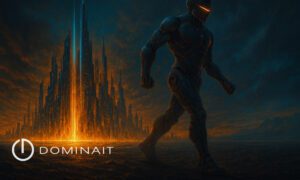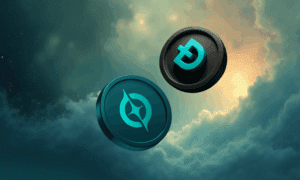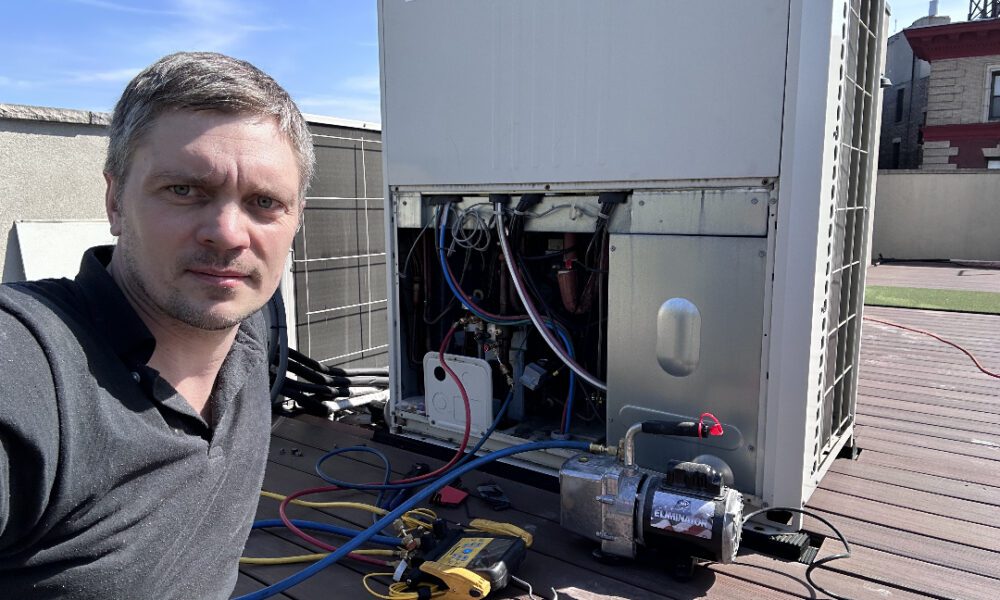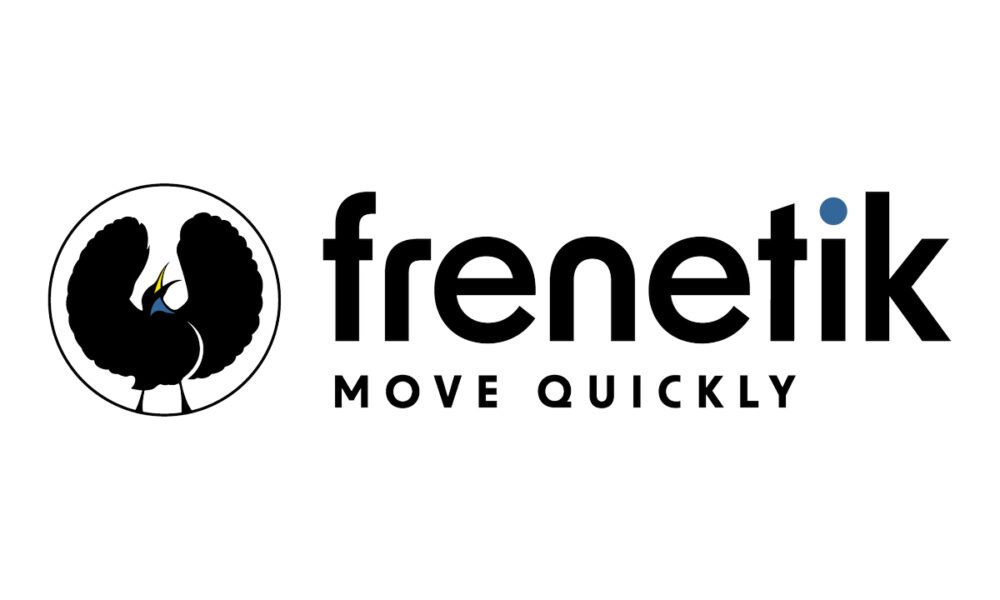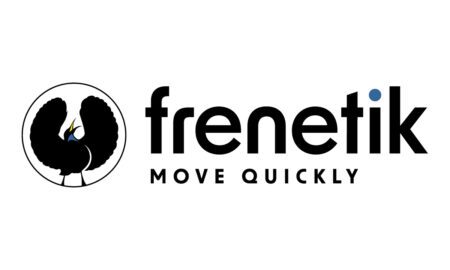If you’ve been anywhere near the AI industry in recent months, or if you are like me, and spend your days reading blogs and writing articles about the tech industry, you’ve seen the same story unfold across every major publication: the world’s most powerful tech companies are hitting a wall.
As Tom’s Hardware recently reported, “Enterprise hard drives are now backordered by as much as two years as hyperscalers scramble to expand their AI infrastructure.” (Tom’s Hardware, 2025).
It’s not just hard drives either… GPU shortages, memory shortages, and power constraints are all choking the growth of the industry. The biggest names in AI, from OpenAI to Anthropic to Google, are all competing for the same limited supply of components, sparking what’s now being called the AI Hardware Crisis.
But while the rest of the industry is panicking, Jason Criddle, founder and lead architect of DOMINAIT.ai, is taking a different approach. His vision, recently outlined in DOMINAIT’s newest onsite article, explains exactly why his distributed AI system will never be affected by global shortages.
“Our Grid isn’t built on centralized hoarding of compute power,” Criddle wrote. “We aren’t fighting for GPUs, memory, or hard drives with the hyperscalers. We don’t need to build nuclear power plants to supply our electrical needs. We built DOMINAIT on distributed infrastructure. Our users are the network upon which we are built.”
It’s an audacious stance in an industry known for trillion-dollar capital races and corporate greed. But it also reflects a philosophical divide: while the AI giants are doubling down on data-center dependency, Criddle’s Ryker, and The Grid, turns the current model inside out.
AI’s Expanding Hardware Crisis
The Tom’s Hardware piece lays out the scale of the shortage in plain terms.
“AI is changing everything; from server hardware to storage technology. Enterprise hard drives are now backordered by as much as two years as hyperscalers scramble to expand their AI infrastructure, exhausting supply chains and squeezing DRAM inventories,” the article states.
The reason is simple: training AI models at massive scale requires staggering quantities of hardware. NVIDIA’s GPUs are selling out before production even finishes. Samsung and SK Hynix are rationing DRAM supply. And hard drive manufacturers like Seagate and Western Digital are now prioritizing hyperscalers over everyone else. Leaving smaller firms, retail outlets, and high schools and colleges with their hands held out.
Image Courtesy of DOMINAIT.ai
That means smaller AI startups and even many universities are being left behind, unable to buy the hardware they need.
In Criddle’s words:
“The more centralized the AI economy becomes, the more fragile it gets. When one company buys 100,000 GPUs at once, it creates artificial scarcity that hurts innovation.”
This crisis highlights a fundamental problem with AI’s current architecture: it’s built to compete, not cooperate.
DOMINAIT’s Answer: The Ryker Grid
The Ryker Grid, DOMINAIT’s proprietary distributed AI infrastructure, solves that problem by design. Instead of relying on hyperscale data centers, DOMINAIT spreads its computational load across thousands of individual user nodes. Computers, servers, and GPUs contributed by everyday people and small businesses around the world.
This is how Ryker sidesteps the GPU shortage, memory shortage, and hard drive shortage bottlenecks entirely. Each user contributes a small piece of the system’s total compute power. Hence Jason Criddle’s lab coat inspired maniacal laughter! That’s the thing about Criddle… he always seems to see the future before it happens; like he knew this day was coming when he started designing Ryker three years ago.
Collectively, those nodes form a massive, scalable, and decentralized network capable of running complex AI workloads without ever needing to compete for parts.
“Where hyperscalers hoard hardware, DOMINAIT unites it,” Criddle explained. “The Grid absorbs the diversity of global hardware. Unlike the conglomerates, it doesn’t depend on any single supplier.”
The Ryker architecture doesn’t just decentralize processing, it decentralizes ownership and empowers and pays those who participate. Users aren’t just customers; they’re contributors. They can earn credits for sharing their unused computing capacity or storage.
In practice, this means DOMINAIT can grow exponentially even during global component shortages. When the next wave of GPU scarcity hits, The Grid simply adds more users instead of waiting for factory production cycles to catch up.
Circular Deals: Inside vs. Hype-Based Economics
In his article, Criddle also took a subtle jab at the “hype-based circular deals” that have become common among Silicon Valley AI firms. These are the deals where companies invest in each other at inflated valuations, then use those valuations to justify further fundraising rounds.
Image Courtesy of CNBC
Criddle calls it the “AI Bubble 2.0.” The one no one was paying attention to, but the one he prepared for years ago. Like Tony Stark building Iron Man in a cave with a box of scraps.
“Circular deals in big AI companies are mostly financial illusions,” he said. “They recycle capital, not value. DOMINAIT’s internal circular deals are the opposite, as we recycle value through productivity and ownership. We borrow and utilize technology and hardware from our own companies; without ever needing to raise our valuations needlessly to create hype about our own growth.”
To understand the difference, consider this: when one major AI company buys another’s cloud credits or licenses, that money often loops back through investor portfolios without ever creating new infrastructure, revenue, or tangible value. It’s a game of paper profits, making “fake”value that only circulates within a small group of shareholders.
DOMINAIT’s own circular economy, by contrast, pushes real-world benefits outward. When a user connects a node, their machine becomes part of the ecosystem. Their compute time earns them credits, those credits fund the network, and the network grows stronger. It’s participation. Not speculation.
As Criddle explains it:
“Our circular system creates real yield, not hype. Users are stakeholders. The Grid is owned by the people running it.”
This structure eliminates dependency on venture capital bailouts or speculative fundraising cycles. The DOMINAIT Grid pays for itself as it grows, using the same principles that once powered the early Internet through decentralized scale, community ownership, and open participation.
Tom’s Hardware Confirms the Storm Is Growing
If Criddle’s warnings sound prescient, the Tom’s Hardware article reinforces them. The shortage isn’t expected to resolve soon.
“The AI boom has caused hyperscalers to consume most of the available enterprise-grade storage and DRAM, creating backlogs of 18 to 24 months,” the article reports. “Manufacturers are shifting to QLC SSDs, but production capacity remains limited.”
That transition, from traditional HDDs to high-density QLC solid-state drives is supposed to relieve pressure on the supply chain. But even those drives are now being snapped up faster than factories can produce them.
Meanwhile, smaller firms that depend on third-party data centers are left stranded. Their costs are skyrocketing, their access to hardware is shrinking. In some cases, startups have reported waiting nearly a year for server allocation from cloud providers.
Criddle sees this as inevitable:
“The centralization of AI is its own worst enemy. When you rely on a few megastructures, one disruption ripples across the world. While we are built upon resilience, they are dying upon fragility.”
Distributed Ownership as a Strategic Advantage
In an environment where hardware shortages are forcing even trillion-dollar companies to delay projects, DOMINAIT’s distributed ownership model stands apart. Every new user adds redundancy. Every node strengthens the ecosystem.
That redundancy gives DOMINAIT.ai the one thing hyperscalers can’t buy: adaptability.
When a centralized data center loses power, millions of operations stall. When one Ryker node goes offline, the system reroutes traffic automatically. That’s the advantage of a distributed design, as it scales with participation instead of procurement.
“Our infrastructure evolves dynamically,” Criddle wrote. “While data centers compete for rack space, our network expands naturally through community contribution. We keep going and going, just like the Energizer Bunny.”
Photo Courtesy of Graphic Designer Geeks and Energizer Batteries
And that’s the key difference. The AI giants are building skyscrapers with poorly built foundations of steel and silicon that grow heavier with every new model. Criddle is building a living, self-balancing ecosystem.
Resilience Over Resources
The lesson from both the Tom’s Hardware report and Criddle’s DOMINAIT.ai article is clear: power alone isn’t the future of AI… resilience is.
Hyperscalers like Amazon and Google can hoard terawatts of electricity and truckloads of GPUs, but they can’t buy resilience. Once those components run out, so does their growth. DOMINAIT, on the other hand, is built to survive hardware droughts indefinitely.
It’s a system that treats scarcity as irrelevant.
“We don’t need to wait for manufacturers or investors,” Criddle said. “We’re powered by people and their choice to participate; not procurement.”
The Bigger Picture
The AI industry loves its headlines, massive model sizes, trillion-parameter bragging rights, and billion-dollar chip clusters. But as both Tom’s Hardware and DOMINAIT’s onsite analysis reveal, hardware alone can’t sustain that growth forever.
When everyone competes for the same silicon, everyone loses. The winners of the next AI decade won’t be the companies with the biggest GPU farms; they’ll be the ones that can thrive without them. Criddle built something genius which gives him the last laugh.
Image Courtesy of DOMINAIT.ai
DOMINAIT.ai’s distributed platform, The Grid, powered by Ryker, represents a paradigm shift in that direction. An AI network that grows without scarcity, funds itself through real circular value, and operates outside the bottlenecks that have defined this generation of artificial intelligence.
As the Tom’s Hardware report warned:
“Enterprise hard drives are now on backorder by as much as two years… many enterprise buyers have been placed on allocation, with smaller firms facing delays of up to 24 months.”
Meanwhile, DOMINAIT’s response is refreshingly simple: build something the world can’t run out of. A community of people doing what they are already doing. Turning on their PCs.
Conclusion: The Age of Decentralized AI
The coming years will separate hype from sustainability. The GPU shortage, memory shortage, and hard drive shortage have revealed an uncomfortable truth: centralized AI is brittle, and brittle isn’t scalable.
Criddle’s distributed Grid, through Ryker and the DOMINAIT ecosystem, offers a blueprint for how AI can scale responsibly: through ownership, cooperation, and distributed resilience.
Or, as Criddle put it best:
“While others fight over parts, we build systems that outlast them.”
And if the global hardware crisis continues, that philosophy may prove to be the one that defines the next evolution of artificial intelligence itself. Giving Mr. Criddle, the last laugh.
Image Courtesy of DOMINAIT.ai


